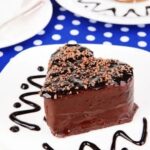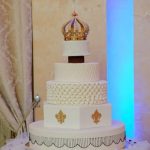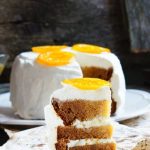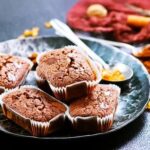Are you looking to create a whimsical and eye-catching dessert for your next celebration? Learn how to decorate a Mallard Duck cake with fondant to impress your guests with this delightful and unique theme.
Mallard ducks are known for their striking colors and distinctive features, making them a perfect inspiration for a creative cake design. Whether it’s for a birthday, baby shower, or any special occasion, this step-by-step guide will help you bring your Mallard Duck cake vision to life.
When it comes to Mallard Duck cake decorating, having the right supplies is essential. From fondant in various colors to tools like rolling pins, cutters, and shaping tools, gathering all the necessary items before starting the decoration process will ensure a smooth and successful cake design. Once you have everything ready, it’s time to move on to baking and preparing the cake layers as the foundation for your edible masterpiece.
Creating the base structure of the Mallard Duck cake is crucial in achieving a realistic and visually appealing result. By following specific techniques and shapes, you can shape the body of the duck using fondant to capture its iconic silhouette accurately. With attention to detail and precision, each step brings you closer to bringing your sweet Mallard Duck creation come alive on your dessert table.
Gathering the Necessary Supplies for Fondant Decorating
When it comes to decorating a mallard duck cake with fondant, one of the most crucial steps is gathering all the necessary supplies for the task. Fondant is a versatile and fun medium to work with, but having the right tools and materials will make the process much smoother.
To begin, you will need a few key items such as fondant in various colors (green, brown, black, orange), a rolling pin, fondant smoother, modeling tools, edible glue or water for adhering fondant pieces together, and a sharp knife for cutting and detailing.
In addition to these basic supplies, there are some optional items that can enhance the overall look of your mallard duck cake. Consider getting edible food coloring pens for finer details like eyes and markings on the duck’s body.
Edible luster dust can also add a beautiful sheen to your finished creation. And don’t forget about any additional decorations you may want to add to your cake, such as edible flowers or greenery to create a picturesque setting for your mallard duck.
Before you start decorating your mallard duck cake with fondant, make sure you have a clean and spacious work area where you can roll out and shape the fondant without any interruptions. Having all your supplies organized and within easy reach will save you time and make the decorating process more enjoyable. With all your supplies at hand, you are now ready to move on to the next step of baking and preparing the cake layers for decoration.
Baking and Preparing the Cake Layers for Decoration
When it comes to baking and preparing the cake layers for a Mallard Duck cake decoration, there are a few key steps to ensure your final product turns out as delicious as it is visually appealing. The first step is to choose the right type of cake for your project. A rich chocolate or vanilla flavor works well as a base for the duck design. Make sure your chosen recipe yields enough batter for the size of cake you need.
Preparing the Cake Layers
Once your cakes have baked and cooled, it’s time to level them off to create even layers for stacking. Use a serrated knife or cake leveler to carefully trim off any domed tops that may have formed during baking. This will help create a smooth surface for decorating and assembling your Mallard Duck cake.
Filling and Stacking the Cake Layers
Before moving on to decorating with fondant, it’s important to fill and stack your cake layers with your choice of frosting or filling. Whether you opt for buttercream, ganache, or fruit preserves, be sure to spread an even layer between each cake tier for added moisture and flavor. Once stacked, use a crumb coat of frosting around the exterior of the cake to seal in any loose crumbs before applying fondant.
Chilling the Cake
To make sure your Mallard Duck cake is firm and stable for fondant decoration, it’s recommended to chill it in the refrigerator for at least 30 minutes after assembling. This will help set the frosting and prevent any shifting or sliding when working with the fondant later on. Once chilled, you can proceed with creating the base structure of your duck cake before adding intricate fondant details.
Creating the Base Structure of the Mallard Duck Cake
Creating the base structure of a Mallard Duck cake is an essential step in achieving a realistic and eye-catching final result. To start, you will need to have your baked and cooled cake layers ready. You can choose any flavor of cake that you prefer, as long as it’s firm enough to hold the shape of the duck when carved and decorated with fondant.
One key aspect of creating the base structure is carving the cake layers into the shape of a duck. You can use a template or reference image to guide you in this process. Start by stacking and layering the cakes, cutting and shaping them until you achieve a rough outline of a duck’s body. Remember to leave some extra cake for adding depth and dimension to the overall shape.
Once you are satisfied with the basic shape of your Mallard Duck cake, it’s time to crumb coat it with a thin layer of frosting or ganache. This will help seal in any crumbs and provide a smooth surface for applying the fondant later on.
The crumb coat also acts as an adhesive for the fondant, ensuring that it sticks securely to the cake. Now that you have successfully created the base structure of your Mallard Duck cake, you can move on to covering it with fondant and adding intricate details to bring your feathered friend to life.
| Aspect | Description |
|---|---|
| Cake Flavors | Choose a firm-flavored cake for easy shaping. |
| Carving Technique | Use templates or pictures for guidance when shaping the duck’s body. |
| Crumb Coating | Apply a thin layer of frosting before covering with fondant. |
Step-by-Step Guide to Using Fondant for the Duck’s Body and Feathers
Fondant is a versatile and popular choice for decorating cakes, giving bakers the ability to create intricate designs and lifelike details. When it comes to decorating a Mallard Duck cake with fondant, the process may seem daunting at first, but with the right techniques and guidance, you can achieve a stunning result. Here is a step-by-step guide on how to use fondant to bring your Mallard Duck cake to life:
- Start by coloring your fondant to achieve the desired shades for the duck’s body and feathers. Using gel food coloring allows for more vibrant colors without altering the consistency of the fondant.
- Roll out a portion of the appropriately colored fondant to cover the body of the duck cake. Gently lift and drape the fondant over the top of the cake, smoothing it down the sides with your hands to avoid any wrinkles or air bubbles.
- For creating the feathers, roll out another portion of colored fondant thinly on a surface dusted with powdered sugar or cornstarch. Use a sharp knife or fondant cutter to create feather shapes, varying their sizes slightly for a natural look.
Using these steps will help you achieve a realistic and visually appealing Mallard Duck cake using fondant. Let your creativity flow as you add finishing touches like eyes, beak, and feet to truly bring your decorative creation to life.
Adding Details Like Eyes, Beak, and Feet to the Duck Cake
Creating the Duck’s Facial Features
Once you have successfully covered the body of your mallard duck cake with fondant, it is time to focus on adding the details that will bring your creation to life. Start by creating the duck’s eyes using small pieces of white fondant rolled into balls. Place these on the head of the duck and gently press down to secure them in place. For added realism, you can use a toothpick to create small indents for pupils in the eyes.
Next, work on shaping the beak of the mallard duck. Roll out some orange fondant and cut out a small triangular shape for the beak. Attach this carefully between the eyes of your duck cake using water or edible glue. You can also use a toothpick to add texture to the beak for a more natural look.
Detailing the Duck’s Feet
To complete the look of your mallard duck cake, don’t forget about its feet. To create the webbed feet of the duck, roll out some yellow fondant and cut out two oval shapes. Use a knife or fondant tool to create indents resembling toe lines on each foot. Gently attach these at the base of your cake using water or edible glue. Position them in a way that gives your duck cake a lifelike stance.
Final Touches for Realism
After adding the eyes, beak, and feet to your mallard duck cake, take some time to make any final adjustments necessary for achieving realistic features. Use food coloring pens or edible dusts to add shading around the eyes and beak, giving depth and dimension to these areas. You can also add small details like eyelids or nostrils using tiny pieces of fondant shaped accordingly. Remember that attention to detail is key when decorating a Mallard Duck Cake with Fondant.
Tips and Tricks for Achieving Realistic Mallard Duck Features
Creating a realistic mallard duck cake may seem like a daunting task, but with the right tips and tricks, you can achieve stunning results. To start, consider investing in quality fondant in shades of green, brown, and black to mimic the colors of a mallard duck’s feathers. Additionally, having tools such as sculpting tools, edible food coloring markers, and modeling chocolate can help bring your duck cake to life.
One important tip for achieving realistic mallard duck features is to pay close attention to detail. Study images of mallard ducks to understand their distinct markings and color patterns. When applying fondant to the cake, make sure to carefully shape and layer it to resemble the texture of feathers. Use a combination of techniques such as rolling, shaping, and cutting the fondant to create a lifelike appearance.
Another trick to enhance the realism of your mallard duck cake is to add depth and dimension to the features. Consider using edible food coloring or petal dust to create shading on the feathers and around the eyes. By adding these subtle details, you can make your duck cake look more three-dimensional and visually appealing. Don’t be afraid to experiment with different techniques until you achieve the desired effect.
Lastly, don’t forget about the finishing touches that can elevate your mallard duck cake from good to outstanding. Add small accents like edible glitter or luster dust on certain areas of the feathers to make them shine.
You can also use small amounts of piping gel or royal icing to create water droplets on the duck’s body for added realism. With patience and practice, you can master the art of decorating a mallard duck cake with fondant and impress your guests with your pastry skills just like a professional baker would.
Finishing Touches and Presentation of the Mallard Duck Cake
When it comes to decorating a Mallard Duck Cake with fondant, the finishing touches and presentation are key in making your creation truly stand out. Here are some tips and ideas on how to put the final touches on your Mallard Duck Cake masterpiece:
- Adding Textured Feathers: To give your Mallard Duck Cake a realistic and textured look, consider using a veining tool or toothpick to create feather-like indentations on the fondant. Start from the center of the duck’s body and work your way outwards, following the natural flow of feathers.
- Color Details: Use food coloring gel or dust to add color details such as the distinct green head of the male Mallard Duck or the speckled black feathers on its body. Take your time blending colors for a lifelike appearance.
- Water Effects: Create a water effect around the base of your cake by using blue fondant rolled out thinly and gently ruffled along the edges to mimic water ripples. You can also use edible glitter or piping gel to add shimmer and depth to the water.
In order to elevate your Mallard Duck Cake presentation, consider incorporating elements like edible flowers, reeds made from fondant, or even a miniature duck pond scene around the base of the cake. By paying attention to these small details, you can truly bring your Mallard Duck Cake to life and impress your guests with both its visual appeal and delicious taste.
Remember that practice makes perfect when it comes to decorating cakes with fondant, so don’t be afraid to experiment and have fun with different techniques. With patience, creativity, and attention to detail, you can create a stunning Mallard Duck Cake that will be the highlight of any celebration or gathering.
Whether you’re an experienced baker looking for a new challenge or a novice decorator wanting to try something unique, decorating a Mallard Duck Cake with fondant can be a fun and rewarding project that allows you to showcase your skills and creativity in a deliciously artistic way. So gather your supplies, follow these steps carefully, and get ready to impress everyone with your beautifully decorated Mallard Duck Cake.
Conclusion and Final Thoughts on Decorating a Mallard Duck Cake With Fondant
In conclusion, decorating a Mallard Duck cake with fondant can be a fun and rewarding experience for both beginner and experienced bakers alike. By following the step-by-step guide provided in this article, you can create a stunning cake that will impress your friends and family at any special occasion.
From creating the base structure of the duck to adding intricate details like eyes, beak, and feet, each step plays a crucial role in achieving a realistic and charming Mallard Duck cake.
One of the key points to keep in mind when decorating a Mallard Duck cake with fondant is to pay attention to details. The use of different shades of fondant for the body and feathers, along with carefully placed features like eyes and feet, will contribute to a lifelike appearance. Additionally, incorporating texture techniques such as ruffling or sculpting can further enhance the overall look of the duck cake.
Finally, remember that practice makes perfect when it comes to fondant decorating. Don’t be discouraged if your first attempt at creating a Mallard Duck cake doesn’t turn out exactly as planned – continue to hone your skills and experiment with different techniques. With patience and creativity, you’ll soon master the art of decorating cakes with fondant, including whimsical creations like a Mallard Duck cake that will surely delight all who see it.
Frequently Asked Questions
How Far in Advance Can You Make Fondant Decorations?
Fondant decorations can typically be made in advance anywhere from a few days to a few weeks, depending on the complexity of the design and how well they are stored. It is recommended to store fondant decorations in an airtight container at room temperature.
How Do You Stick Fondant to a Cake?
When it comes to sticking fondant to a cake, there are a few methods you can use. One common method is to lightly brush the surface of the cake with water or edible glue before applying the fondant. You can also use buttercream or royal icing as an adhesive for fondant decorations.
Can I Use Jam to Stick Fondant on Cake?
Jam can be used to stick fondant on a cake, but it may not be as effective as other methods like water, edible glue, or buttercream. Jam can add extra moisture to the cake which may affect the fondant’s texture or cause it to slide off. It is best to use traditional fondant adhesives for better results.

Welcome to my blog about home and family. This blog is a place where I will share my thoughts, ideas, and experiences related to these important topics. I am a stay-at-home mom with two young children. I hope you enjoy reading it! and may find some helpful tips and ideas that will make your home and family life even better!





